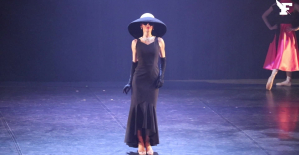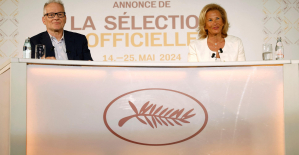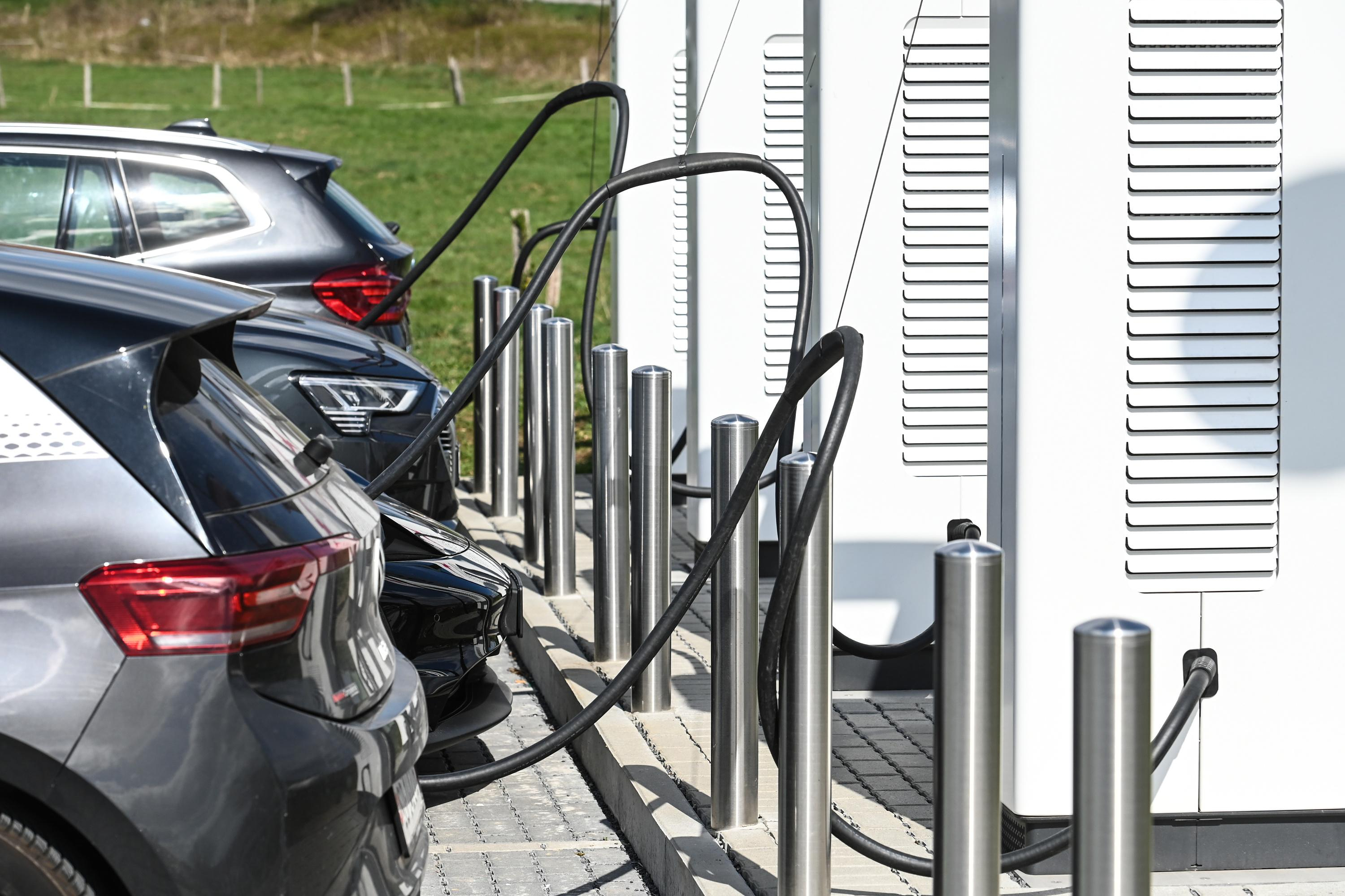There is hardly a better way to placate impatient drivers: the red signal at the traffic lights is heart-shaped, which is probably unique in the world. In Akureyri in northern Iceland, the heart has become something of a trademark since a designer started handing out hearty stickers 15 years ago. In doing so, she wanted to comfort her compatriots over the consequences of the global financial crisis, which had hit the island particularly hard.
Others followed suit, and today the heart can be found all over the city: as a decoration in kitchen windows, as a souvenir in souvenir shops, as a sculpture and as a selfie background at the beginning of the shopping street in the center - and of course on the traffic lights.
It is a real rarity outside of Reykjavík to have traffic lights on the streets at all. In sparsely populated Iceland, mostly roundabouts are built at intersections. Beyond the metropolitan area around the capital in the south-west, where three quarters of the total population lives, there is urban life only in Akureyri, a town with almost 20,000 inhabitants, located on the long Eyjafjord at 65 degrees and 41 minutes north latitude.
From here it is only a good 100 kilometers to the Arctic Circle. If you drive from Reykjavík to Akureyri via the N1 ring road, you will cross grey-brown, almost uninhabited stretches of land consisting only of sand and boulders. On the north coast, the environment becomes friendlier and greener again, as if you were heading for an arctic oasis.
"When people from Reykjavík come to us in the north, it's almost like traveling to another country," says Haraldur Egilsson, director of the Akureyri Museum, which is housed in a chic 1930s building is housed on a hill on the outskirts of town. "You really have everything you need here - and you can be in the middle of nature in five minutes."
The historian grew up in the capital and moved north in the late 1990s. He actually only wanted to stay for a year, but that has now become half a life. "Akureyri is a wonderful place to raise children," says the museum director. "We don't lock our front door, that's a matter of course for us. I would be more careful in Reykjavík.”
The city museum is a good starting point if you want to learn something about everyday culture in the region. A special exhibition is currently running on the ground floor with large-format color photos of grocery stores from a time when retailers still served their customers in white coats. “Akureyri has a long history as a center of commerce and services,” says Egilsson. "Almost like a frontier town in the Wild West."
The small grocery stores have long since given way to modern supermarkets, but the border town feeling has remained, if only because of the geographical location. At the same time, one is amazed to find such a lively town in such a remote region. There is a university, cinemas, even hardware stores.
In many ways, Akureyri is Reykjavík's arctic counterpart. It basically has everything the capital has to offer, only usually one size smaller. The skyline of the city is dominated by a mighty church whose expressionist style is reminiscent of Hallgrímskirkja in central Reykjavík.
The resemblance is no coincidence, the two places of worship were designed by Icelandic state architect Guðjón Samúelsson in the first half of the 20th century. Their facades consist of a striking series of concrete pillars, the white color of which is intended to evoke the glaciers inland.
The counterpart to Laugavegur, Reykjavík's main shopping street and party mile, is Hafnarstraeti. In the high season, cruise passengers, backpackers and outdoor adventurers cavort there, and the nightlife doesn't have to hide either: like the "Goetu Barinn" in the old town, where on weekends the partying goes on into the morning. Icelandic bands play regularly at the Græni hatturinn music club, some of which have already achieved international fame.
From the Hafnarstraeti it is only a few steps to the city's landmark, an imposing round building on the waterfront, which since its inauguration in 2010 has functioned as a concert hall and congress center in one. Calling itself “Court” after the Icelandic word for temple, it's something like the little sister of the famous Harpa Philharmonic Hall on Reykjavík's harbour.
Behind the facade of basalt columns of the rotunda is the most important cultural institution in North Iceland. "It is certainly not a matter of course to bring an international co-production of the 'Nutcracker' to the stage up here in the Arctic Circle," says Stine Björnsdóttir, who, as artistic director of the cultural center, has to keep track of around 300 events a year: "The culture has a very high priority for us.”
The city therefore affords a professional theater ensemble and a symphony orchestra, whose members also give music lessons. "In this way, the children learn from an early age that making music is not just a pastime, but a real job from which you can make a living," says Björnsdóttir.
In recent years, Akureyri has done a lot to step out of the shadow of the southwestern capital and attract visitors from abroad. The local airline NiceAir has been offering direct flights to Copenhagen since spring, and in winter there are even two flights from Berlin directly to Akureyri, and from May 2023 Condor will be flying from Frankfurt to Akureyri.
These flights are designed to appeal to guests who are coming to Iceland for the second or third time and want to avoid Reykjavík, which is often overcrowded in high season and loses some of its charm as a result. And while travelers face check-in lines and boarding gates at Keflavík International Airport, which also serves as a hub for transatlantic flights, Akureyri's mini-airport promises speedy check-ins.
With its restaurants, shops and hotels, Akureyri is the ideal starting point for excursions in the area - from whale watching in Húsavík to a day trip to Grimsey, an offshore island in the Arctic Circle. The Diamond Circle was opened in September 2020 as a response to the Golden Circle, a circuit in the south-west that connects natural wonders such as Þingvellir National Park and the Great Geysir and is a standard part of any visit to Iceland.
Like its role model in the southwest, the Diamond Circle can be completed in one day. It presents breathtaking scenery in fast-forward: stops on the 250-kilometer route include Lake Mývatn, the mystical lava formations of Dimmuborgir and the mighty Dettifoss waterfall, whose edge you can get so close that you get your feet wet.
In order to lure tourists away from the busy ring road, the Arctic Coast Way was established in 2019, a 900-kilometer route along the north coast that leads through fjord landscapes to remote fishing villages and hot springs.
Thanks to hosts like Heba Finnsdóttir, Akureyri also offers decent food. She is the owner of Strikið, a restaurant on the fifth floor of a purpose-built building overlooking the harbour. Finnsdóttir has worked in Reykjavík and Copenhagen, and when she returned to her hometown she took over the place she used to wait tables when she was a teenager – and turned it into the best restaurant in town.
"Our most important customers are the locals," she says, "because they don't just come once, they come regularly." "Icelanders used to eat out twice a year, now twice a week."
Demands have also increased when it comes to the choice of dishes. In Finnsdóttir's time as a waitress, 'Strikið' served pizza and pasta, today there are Asian-inspired dishes with a recognizable regional reference. In addition to Nordic sushi variations, marinated cod with yuzu sorbet and crispy rolls of dough filled with lamb knuckle confit, the menu also features an “arctic pizza”, behind which is a palm-sized flatbread with char from the North Atlantic, pickled beetroot, goat cheese and pesto.
For regular guests who find such creations too playful, Finnsdóttir has solid alternatives on offer: "We're also a family restaurant," she says. "It doesn't work in Iceland without a burger."
The newest attraction in Akureyri is the recently opened Skógarboð, a 1300 square meter wellness temple lined with birch, pine and fir trees - a rarity in these latitudes. The Skógarböð also has a role model in the southwest: the Blue Lagoon, a large spa near Keflavík Airport that blends into a lava landscape and has made Iceland a place of longing for wellness enthusiasts.
Admission to the forest spa costs 42 euros, so many locals are likely to continue to prefer the outdoor pool in the city center, which is open from 7 a.m., even when the temperatures are below zero and there is snow. In the outdoor pool you can learn more about the Icelandic way of life than in any museum.
There's a lot going on here even on cold mornings: Seniors doing aqua aerobics, school children on the slide, and competitive swimmers swimming their lengths in the 30-degree thermal water. "The worse the weather, the more comfortable it is in the warm water," says Pálína Guðnadóttir, a member of the pool management team. "Without our swimming pools, we wouldn't even know what to do in winter."
As Akureyri's population grows, Guðnadóttir has set out to expand the facility, including for the weather sensitive. She wants to build an indoor swimming pool with a 50-meter pool - and a glass front with a view of the fjord.
Museum director Haraldur Egilsson also assumes that the city will continue to grow. The combination of manageability, closeness to nature and good infrastructure also makes it attractive for families from the southwest, where life has become expensive. One day he wants to devote an exhibition to Akureyri's distinctive mark - he has already collected a lot of photos of hearts scattered all over the place. “After all, they are also part of our identity,” he says. And they are a symbol of how warmly you are received in this small town in the far north.
Arrival: For example with Icelandair, Play Airlines or Lufthansa to Keflavik, then by rental car or domestic flight from Reykjavík City Airport. NiceAir is planning two non-stop flights from Berlin to Akureyri in winter.
Weather: The climate is arctic-maritime. Good views of the Northern Lights in autumn and winter.
Accommodation: With a view of the Eyjafjord in the “Icelandair Hotel”, (double rooms from 153 euros, icelandairhotels.com). Centrally on the Hafnarstraeti in the hotel "Kea" (double room for 150 euros, keahotels.is). Close to nature at Skjaldarvik Guesthouse (double room from 150 euros, skjaldarvik.is)
More information: visitakureyri.is; northiceland.is; arcticcoastway.is
The trip was supported by Visit North Iceland and Play Airlines. You can find our standards of transparency and journalistic independence at axelspringer.com/de/Werte/downloads.

 Germany: the trial of an AfD leader, accused of chanting a Nazi slogan, resumes this Tuesday
Germany: the trial of an AfD leader, accused of chanting a Nazi slogan, resumes this Tuesday New York: at Columbia University, the anti-Semitic drift of pro-Palestinian demonstrations
New York: at Columbia University, the anti-Semitic drift of pro-Palestinian demonstrations What is Akila, the mission in which the Charles de Gaulle is participating under NATO command?
What is Akila, the mission in which the Charles de Gaulle is participating under NATO command? Lawyer, banker, teacher: who are the 12 members of the jury in Donald Trump's trial?
Lawyer, banker, teacher: who are the 12 members of the jury in Donald Trump's trial? What High Blood Pressure Does to Your Body (And Why It Should Be Treated)
What High Blood Pressure Does to Your Body (And Why It Should Be Treated) Vaccination in France has progressed in 2023, rejoices Public Health France
Vaccination in France has progressed in 2023, rejoices Public Health France Food additives suspected of promoting cardiovascular diseases
Food additives suspected of promoting cardiovascular diseases “Even morphine doesn’t work”: Léane, 17, victim of the adverse effects of an antibiotic
“Even morphine doesn’t work”: Léane, 17, victim of the adverse effects of an antibiotic Orthodox bishop stabbed in Sydney: Elon Musk opposes Australian injunction to remove videos on X
Orthodox bishop stabbed in Sydney: Elon Musk opposes Australian injunction to remove videos on X One in three facial sunscreens does not protect enough, warns L'Ufc-Que Choisir
One in three facial sunscreens does not protect enough, warns L'Ufc-Que Choisir What will become of the 81 employees of Systovi, a French manufacturer of solar panels victim of “Chinese dumping”?
What will become of the 81 employees of Systovi, a French manufacturer of solar panels victim of “Chinese dumping”? “I could lose up to 5,000 euros per month”: influencers are alarmed by a possible ban on TikTok in the United States
“I could lose up to 5,000 euros per month”: influencers are alarmed by a possible ban on TikTok in the United States Dance, Audrey Hepburn’s secret dream
Dance, Audrey Hepburn’s secret dream The series adaptation of One Hundred Years of Solitude promises to be faithful to the novel by Gabriel Garcia Marquez
The series adaptation of One Hundred Years of Solitude promises to be faithful to the novel by Gabriel Garcia Marquez Racism in France: comedian Ahmed Sylla apologizes for “having minimized this problem”
Racism in France: comedian Ahmed Sylla apologizes for “having minimized this problem” Mohammad Rasoulof and Michel Hazanavicius in competition at the Cannes Film Festival
Mohammad Rasoulof and Michel Hazanavicius in competition at the Cannes Film Festival Skoda Kodiaq 2024: a 'beast' plug-in hybrid SUV
Skoda Kodiaq 2024: a 'beast' plug-in hybrid SUV Tesla launches a new Model Y with 600 km of autonomy at a "more accessible price"
Tesla launches a new Model Y with 600 km of autonomy at a "more accessible price" The 10 best-selling cars in March 2024 in Spain: sales fall due to Easter
The 10 best-selling cars in March 2024 in Spain: sales fall due to Easter A private jet company buys more than 100 flying cars
A private jet company buys more than 100 flying cars This is how housing prices have changed in Spain in the last decade
This is how housing prices have changed in Spain in the last decade The home mortgage firm drops 10% in January and interest soars to 3.46%
The home mortgage firm drops 10% in January and interest soars to 3.46% The jewel of the Rocío de Nagüeles urbanization: a dream villa in Marbella
The jewel of the Rocío de Nagüeles urbanization: a dream villa in Marbella Rental prices grow by 7.3% in February: where does it go up and where does it go down?
Rental prices grow by 7.3% in February: where does it go up and where does it go down? Europeans: “All those who claim that we don’t need Europe are liars”, criticizes Bayrou
Europeans: “All those who claim that we don’t need Europe are liars”, criticizes Bayrou With the promise of a “real burst of authority”, Gabriel Attal provokes the ire of the opposition
With the promise of a “real burst of authority”, Gabriel Attal provokes the ire of the opposition Europeans: the schedule of debates to follow between now and June 9
Europeans: the schedule of debates to follow between now and June 9 Europeans: “In France, there is a left and there is a right,” assures Bellamy
Europeans: “In France, there is a left and there is a right,” assures Bellamy These French cities that will boycott the World Cup in Qatar
These French cities that will boycott the World Cup in Qatar Serie A: Bologna surprises AS Rome in the race for the C1
Serie A: Bologna surprises AS Rome in the race for the C1 Serie A: Marcus Thuram king of Italy, end of the debate for the position of number 9 with the Blues?
Serie A: Marcus Thuram king of Italy, end of the debate for the position of number 9 with the Blues? Milan AC-Inter Milan: Thuram and Pavard impeccable, Hernandez helpless… The tops and flops of the derby
Milan AC-Inter Milan: Thuram and Pavard impeccable, Hernandez helpless… The tops and flops of the derby Ligue 2: Auxerre leader, Bordeaux in crisis, play-offs... 5 questions about an exciting end of the season
Ligue 2: Auxerre leader, Bordeaux in crisis, play-offs... 5 questions about an exciting end of the season


















